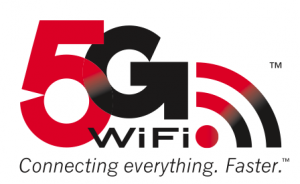Share This
Related Posts
Tags
Ready for 5G?
By Anca Gagiuc on May 16, 2013 in Technology
 A new mobile technology has appeared approximately every decade since the first 1G system was introduced in 1981; 2G networks were made public in 1992, 3G rolled out in 2001, and 4G systems were standardized in 2012. Today, most of the world is rolling out 4G networks, but the Koreans are pushing for 5G mobile communications technology. They say it will be delivered to consumers by 2020.
A new mobile technology has appeared approximately every decade since the first 1G system was introduced in 1981; 2G networks were made public in 1992, 3G rolled out in 2001, and 4G systems were standardized in 2012. Today, most of the world is rolling out 4G networks, but the Koreans are pushing for 5G mobile communications technology. They say it will be delivered to consumers by 2020.
Samsung Electronics announced the successful outcome of their attempt to develop the world’s first adaptive array transceiver technology operating in the millimeter-wave Ka bands for cellular communications. More precisely, they’ve been successful in testing the super-fast successor of 4G Long Term Evolution (LTE), hitting a speed of 1.056 Gbps in tests, at a frequency of 28 GHz and to a distance of 2 kilometers. This represents the core of the 5G mobile communications system, this is what will make possible to transmit data up to several hundred times faster than current 4G networks.
Once the 5G networks start being commercialized, users will be able to transmit massive data files, high quality digital movies “practically without limitation.” Fast, seamless downloads of 3D movies and games, real-time streaming of ultra high-definition content and even remote medical assistance will be available to subscribers.
“The millimeter-wave band is the most effective solution to recent surges in wireless Internet usage. Samsung’s recent success in developing the adaptive array transceiver technology has brought us one step closer to the commercialization of 5G mobile communications in the millimeter-wave bands,” said Samsung executive vice president and head of digital media and communication R&D ChangYeong Kim.
Although this sounds like a breakthrough, Samsung is not the first company to have developed the core tech for 5G networks. NTT DoGoMo, in collaboration with the Tokyo Institute of Technology, has conducted a 10Gbps wireless test in Ishigaki.
What will this type of network speed mean? Google Fiber runs currently at 1Gbps in selected cities in the US, like Kansas, Austin, Provo. It’s the hardware of mobile technology that will have to be adjusted to make 5G wireless a valid possibility. Processing chips will have to be restructured to be able to handle such computing power, and right now it’s impossible to say how a 5G device will look like, on the exterior or under the hood. Questions, concerns, and fears are many, but one thing is certain: the whole user experience on the internet will be nothing close to how we know it now. Furthermore, if we think that the developers in white space technology could have brought wireless coverage in places where cell signal is a dream today, the next mobile network is more tangible than we dare to think.
